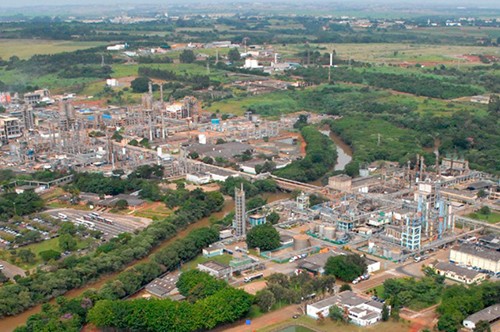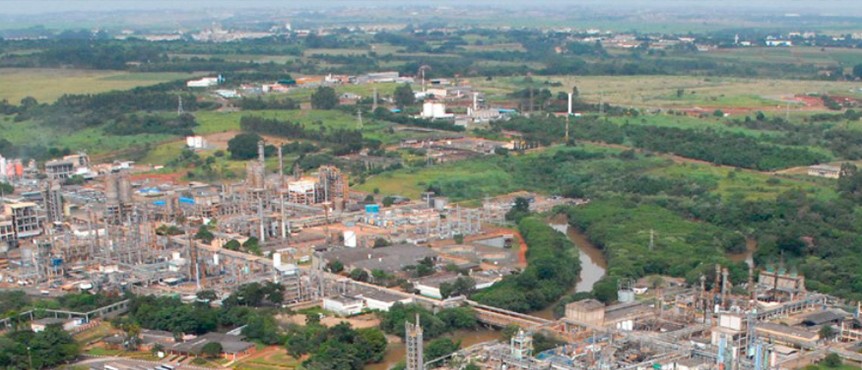With the region’s largest economy still awaiting recovery, its industry needs to overcome a variety of obstacles, including high energy and logistics costs.


IMAGE: Courtesy of Rhodia (Solvay Group)
Between 2011 and 2017, Brazil’s GDP lost 21% of its value in US dollar terms, even if 2017 saw some mild signs of recovery after two years of strong recession. Last year GDP grew by 1% and, in 2018, the Brazilian government’s forecast is of a still disappointing 1.6% (by contrast, GDP contracted by 3.5% in 2015 and a further 3.6% in 2016, according to data from the International Monetary Fund).
Brazil is still Latin America’s largest economy, with a population of 207 million people and outstanding potential if it can unlock healthy growth rates again. “I do not see economic recovery yet,” says Fernando Figueiredo, CEO of the Brazilian Chemical Industry Association (Abiquim). “To grow by just 1% is a failure for a country that has the potential to grow between 3% and 5% annually.”
According to Abiquim figures, the chemical industry has 21% idle capacity and 38% of the demand for chemical products in the country is met by imports. Indeed, the chemical industry trade deficit has grown from US$1.5 billion in 1991 to US$23.2 billion in 2017. Among the root causes that are preventing further investment on Brazilian soil, Figueiredo mentions high feedstock costs, high energy prices, infrastructure bottlenecks, and high interest rates. “Improving the cost of energy or feedstock alone will not attract new investors if interest rates continue to be high,” he insists.
While the country is struggling to leave the effects of recession behind, increased oil prices and the use of technology are aligning to reap the potential of upstream hydrocarbon development at the country’s pre-salt reserves. The improvement in the feedstock situation, however, will not herald new sizeable petrochemical capacity soon. “Expansions and unconventional raw material supply are expected to increase in Mercosur, but it is unlikely there will be a greenfield facility of over one million tonnes of ethylene and derivatives in Brazil or Argentina by 2022,” says Rina Quijada, vice president Latin America at IHS Markit.
“The expectation is that Brazil can produce around 5 million barrels of oil per day by 2030, and be self-sufficient in gas as soon as 2022,” says Figueiredo. “The issue,” he argues, “is to find a way to use this oil and gas to develop the industry in Brazil, generating added value and jobs.”
Adding to the uncertainty of economic and industrial recovery was the 2018 election to provide the country with its 38th president. While the victory of Jair Bolsonaro worried the international community for its far right views on a variety of matters, its election was well received by the markets. Now, leaders expect the new administration to work together with the industry to promote growth and value creation.

IMAGE: Courtesy of Rhodia (Solvay Group)
Between 2011 and 2017, Brazil’s GDP lost 21% of its value in US dollar terms, even if 2017 saw some mild signs of recovery after two years of strong recession. Last year GDP grew by 1% and, in 2018, the Brazilian government’s forecast is of a still disappointing 1.6% (by contrast, GDP contracted by 3.5% in 2015 and a further 3.6% in 2016, according to data from the International Monetary Fund).
Brazil is still Latin America’s largest economy, with a population of 207 million people and outstanding potential if it can unlock healthy growth rates again. “I do not see economic recovery yet,” says Fernando Figueiredo, CEO of the Brazilian Chemical Industry Association (Abiquim). “To grow by just 1% is a failure for a country that has the potential to grow between 3% and 5% annually.”
According to Abiquim figures, the chemical industry has 21% idle capacity and 38% of the demand for chemical products in the country is met by imports. Indeed, the chemical industry trade deficit has grown from US$1.5 billion in 1991 to US$23.2 billion in 2017. Among the root causes that are preventing further investment on Brazilian soil, Figueiredo mentions high feedstock costs, high energy prices, infrastructure bottlenecks, and high interest rates. “Improving the cost of energy or feedstock alone will not attract new investors if interest rates continue to be high,” he insists.
While the country is struggling to leave the effects of recession behind, increased oil prices and the use of technology are aligning to reap the potential of upstream hydrocarbon development at the country’s pre-salt reserves. The improvement in the feedstock situation, however, will not herald new sizeable petrochemical capacity soon. “Expansions and unconventional raw material supply are expected to increase in Mercosur, but it is unlikely there will be a greenfield facility of over one million tonnes of ethylene and derivatives in Brazil or Argentina by 2022,” says Rina Quijada, vice president Latin America at IHS Markit.
“The expectation is that Brazil can produce around 5 million barrels of oil per day by 2030, and be self-sufficient in gas as soon as 2022,” says Figueiredo. “The issue,” he argues, “is to find a way to use this oil and gas to develop the industry in Brazil, generating added value and jobs.”
Adding to the uncertainty of economic and industrial recovery was the 2018 election to provide the country with its 38th president. While the victory of Jair Bolsonaro worried the international community for its far right views on a variety of matters, its election was well received by the markets. Now, leaders expect the new administration to work together with the industry to promote growth and value creation.